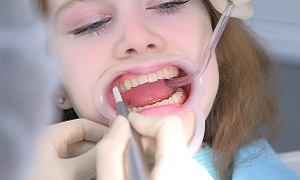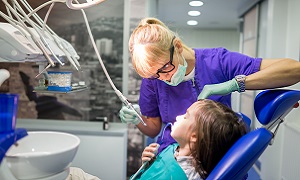Dental Braces
Dental braces are dental tools which orthodontists use for correcting crowded, crooked or misaligned teeth and jaws. Generally, people go for dental braces during their early teenage years, though adults can also benefit from them. The goal of dental braces is to align your teeth and jaws to help you produce an even bite and a pleasing smile.
There is also an option of customized, removable tools known as clear aligners or invisible braces, which can give a more acceptable appearance to some adults. You can discuss the pros and cons with your doctor to decide which one might be best for you.
Purpose
Dental braces can offer corrective treatment for various problems which includes:
- Too much space between your teeth
- Overcrowded or crooked teeth
- Upper front teeth that may overlap the lower teeth too much, which can be vertically or horizontally
- Upper front teeth that bite behind the lower ones
- Other jaw misalignment problems that might lead to an uneven bite
Braces can not only help with proper alignment of your teeth, but it can also improve the health of your mouth and the way you bite, chew and speak.
If you are an adult with braces, it may require you to wear them longer than a younger person would, though the results produced should still be similar. However, since your facial bones are no longer growing, there might be some problems, which braces alone can’t correct.
Preparation
If your regular dentist notices problems with your teeth or jaws that require treatment, it is likely that he/she will refer you to an orthodontist, a dentist specializing in diagnosing, preventing as well as treating dental and facial irregularities.
Children generally go for braces between the ages of eight and fourteen, while their teeth are easier to move and the facial bones are still growing.
The preparation generally involves the following:
Oral exam
X-rays
You’ll get a series of X-rays for determining the position of teeth. The panoramic X-ray is most commonly used. It shows the entire upper and lowers teeth in biting position and any teeth which may be still developing within the jaws. Special head X-rays can help determine the size, position, and relationship of jaws to teeth as well. These 3D X-rays are able to give a better idea of the true position of the teeth to each other.
Plaster models
You will need to bite into some soft material, which will remain on your teeth for a few minutes. From this impression, a plaster model of your teeth, i.e. a dental cast is created and the orthodontist is able to evaluate your bite. Sometimes, this dental cast might be scanned into a digital format for even further evaluation or treatment decisions.
Potential tooth extraction
If your mouth is overcrowded, there might be limited or even no room in the jaw for all the existing teeth. In such cases, the orthodontist may recommend removing one or more permanent teeth so that there is more room for the remaining teeth to fit comfortably. This can allow your teeth to fit better and can also allow adequate space for cleaning.
Other procedures
In severe cases, where tooth movement can’t alone correct a bite as it may be significantly out of alignment, jaw repositioning surgery might be required in combination with orthodontics.
After evaluation of your teeth and jaws is done, your orthodontist customizes a treatment plan for you. This generally involves the use of fixed braces, which are bonded temporarily to your teeth.
Procedure
The procedure for dental braces generally takes around one hour to two. It can generally depend on your teeth as well as the kind of braces that you are going to wear. The process for putting them on can sometimes even require two appointments.
Getting braces put on generally doesn’t hurt, though some parts of the process can involve a little sense of pressure.
Conventional Braces
If your back teeth are quite close together, then the orthodontist might need to put spacers or rubber bands between them around one week before your procedure. This step helps to create enough space for the bands to fit around your back teeth.
The downside of spacers is that your back teeth and jaw might be sore as your teeth move for accommodating the spacing devices.
Before your orthodontist puts your braces on, it is important for your teeth to be really clean. Once your teeth have been cleaned thoroughly and dried, your dentist is able to apply the braces.
Brackets are the tiny metal or ceramic devices which can hold the wires in place on your teeth. In order to attach the brackets, the orthodontist will place a small amount of glue in the center of each of your teeth. Then he/she will shine a blue light on your teeth, to set the glue. Though the taste of the glue is generally bad it isn’t toxic.
Next, a bracket is placed in the center of your tooth.
In order to anchor the braces, your orthodontist will need to metal bands around your back molars.
After he/she chooses a band which is around the right size for your tooth, the orthodontist is going to apply some glue to the band and set the glue with the blue light and slide the band onto your tooth.
Maneuvering the band onto your molar might involve some twisting or pressure. Inform your orthodontist if you’re feeling a pinching sensation. He/she is able to adjust the band so that it’s comfortable.
After the brackets and bands are in place firmly, your orthodontist is going to attach the archwire to the brackets. To do this, they will be wrapping a small rubber band i.e. ligature around each bracket for holding the wire in place.
The orthodontist will then be snipping the end of the archwire to make sure it doesn’t touch the gums at the back of your mouth.
Lingual braces
Lingual braces have most of the same components as conventional braces. However, they are applied to the back of your teeth, on the side of the tongue, instead of the front of the teeth.
Due to the special placement, putting them on might require a little longer than conventional braces and it must only be applied by orthodontists who are specially trained.
Aftercare and results
After an hour or two after you put your braces on, you should feel some discomfort. You may notice some pain while eating or you might also have a generalized headache or jaw discomfort for a few days.
You might try an over-the-counter pain medicine to ease the pain.
For the first few days after you put the braces on, remember to have soft foods to minimize pain and chewing. You can include foods such as yogurt, oatmeal, mashed potatoes, scrambled eggs, macaroni and cheese, etc.
You might also have a sore place inside your mouth, where the brackets or wires rub against the insides of your cheeks. You can choose to use the wax your orthodontist gave you to cover the parts of the braces that cause pain. You can also try rinsing with a saltwater solution or applying a topical anesthetic. It can take around one month for your mouth to adjust to the braces, after which you won’t experience this soreness anymore.
Soon you will notice your teeth starting to gradually move into place. However, you will also need to adopt a new daily dental care routine, after the braces are applied.
In order to prevent any cavities or stains on the surface of your teeth, you will need to start a new way to brush. It is recommended that you clean your teeth multiple times a day, even if you are not at home.
As long as you have the braces, it is important to avoid certain foods that can cause problems. Your dentist will likely advise you to stay away from foods such as:
- Nuts
- Popcorn
- Corn on the cob
- Ice
- Hard candy
- Chewing Gum
- Caramels
On average, a person might need to wear full braces for up to three years. One can choose to wear retainers indefinitely to make sure that the final results remain stable.
Braces are generally quite effective in realigning crooked teeth and helping you correct improperly positioned jaws, thus giving you a better smile as well as a healthy mouth.
If you are wearing braces, you have a very important role to play as well, which includes following the instructions of your orthodontist, as it is crucial if you are looking for the treatment to be a success.
Risks
Dental braces are quite safe, though in a few cases, there might be some risks.
Braces create small spaces around your teeth which might sometimes trap food particles and this can promote bacterial-filled plaque deposits. If a patient fails to remove this plaque, it might lead to the loss of minerals in the outer enamel surface of your teeth. This might lead to permanent stains on your teeth. It can also lead to cavities and gum disease.
There are some long-term risks as well, which include:
Shorter root lengths- During tooth movement, some of the bone in the path of the moving tooth will dissolve, while the new bone is laid behind it. Permanent loss of tooth root length might occur during this process, which can lead to less stable teeth. In many of the cases, however, this doesn’t lead to any problems.
Loss of correction- If you don’t follow the instructions of your orthodontist after the braces are removed, particularly when it comes to wearing a device called a retainer, it is possible that you can lose some of the correction that you gained while wearing your braces.


